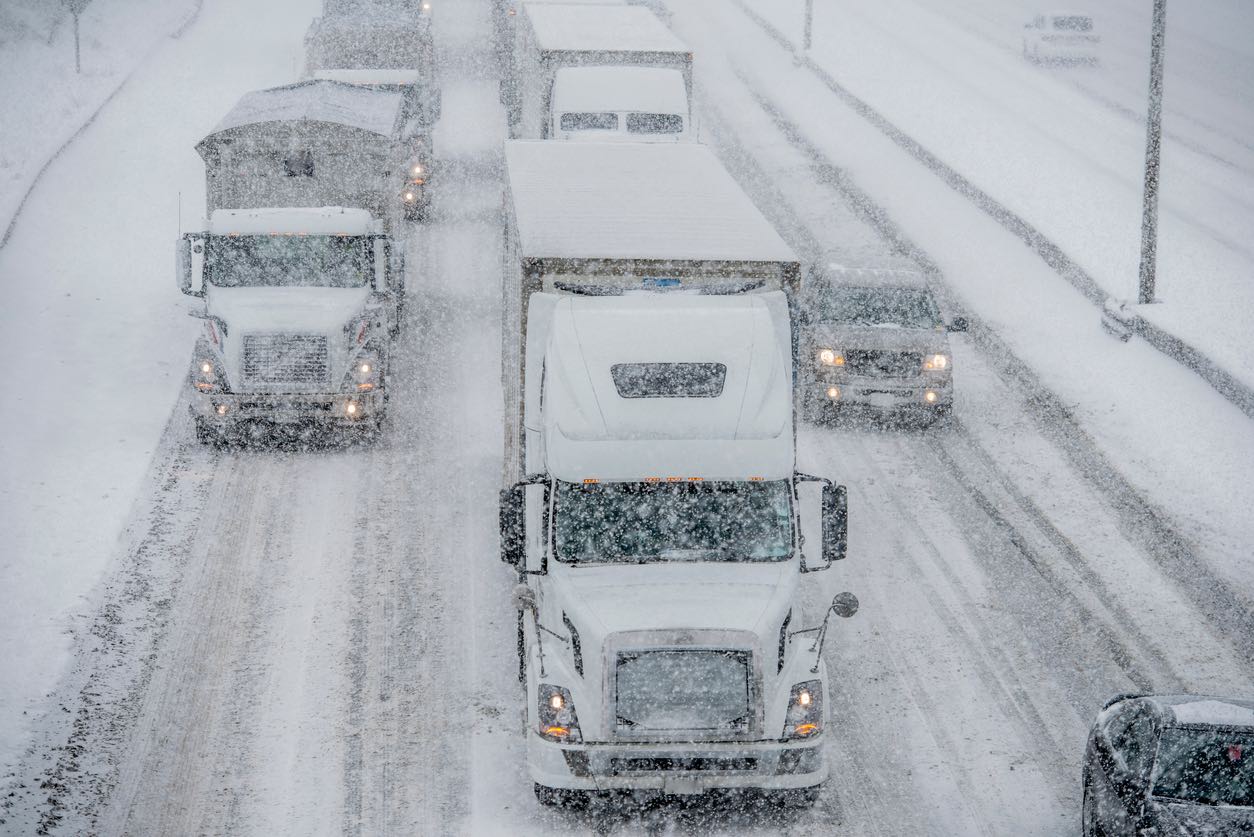The predictability of weather patterns is no longer relevant in the dynamic world of logistics. The days of shippers being able to predict and plan for seasonal weather disruptions are long gone. Due to the evident changes in global climate patterns, severe weather now threatens every month, necessitating the constant vigilance of logistics specialists. The shipping sector has major hurdles as a result of these unpredictable events, which necessitate a proactive strategy to guarantee efficient operations.
The significance of ongoing monitoring and tracking of weather conditions across multiple locations is highlighted by this new reality. It’s important to prepare ahead, anticipate probable interruptions, and have solid, executable strategies in place rather than merely reacting to approaching storms. For shippers, this necessitates a change in approach, one that embraces a more comprehensive view of weather readiness. Being caught off guard by unforeseen weather occurrences may have far-reaching effects, both financially and reputationally, in a sector where punctual delivery and operational efficiency are crucial.

Weather is a key factor in the complex dance of logistics and transportation. It has never been more important to comprehend the many weather phenomena and their possible effects as the climate goes through extraordinary changes. This knowledge is essential for shippers and logistics experts since it forms the basis for proactive planning and risk reduction. Businesses may better prepare, adapt, and prosper by understanding the specifics of each weather event. This will help to ensure that their operations are robust even in the face of nature’s unpredictability.
Hurricanes: The hurricane season, spanning June to November, casts a shadow over the South, Southeast, and Eastern seaboard of the U.S. While the entire season demands vigilance, the latter months often bring the most ferocious storms. These hurricanes not only disrupt transportation but can also lead to significant infrastructural damage, necessitating comprehensive preparedness strategies.
Fires: While the dry months in the U.S. and Canadian West have historically been fire-prone, a concerning trend has emerged. Recent years have witnessed fires causing disruptions in Eastern states as early as late spring. These fires can lead to road closures, air quality issues, and transportation delays, emphasizing the need for alternative routing and contingency plans.
Winter Storms: The Northeast, Midwest U.S., and Canada are no strangers to the challenges posed by winter storms. Snow and ice accumulations can wreak havoc on infrastructure, leading to transportation standstills. Moreover, recent climatic anomalies have seen states like Texas, typically unaccustomed to severe winter weather, grappling with its challenges, underscoring the need for broader preparedness.
Tornados: The months of May and June mark the peak of tornado season. Businesses located in the infamous “tornado alley” are naturally at heightened risk. However, even those outside this zone are not immune to the ripple effects of these powerful twisters. Ensuring active warning systems and having robust backup plans can make a world of difference in minimizing disruptions.
Flooding: When torrential downpours strike, especially during tropical storms or hurricanes, the aftermath can be devastating. Rivers and streams can quickly overflow their banks, inundating shipping routes and storage facilities. For shippers, this necessitates a keen eye on weather forecasts, potential rerouting strategies, and access to elevated storage solutions to safeguard their cargo.
Extreme Heat: The Southwestern U.S., with its arid landscapes, is particularly susceptible to the challenges of extreme heat. Soaring summer temperatures can strain power grids, leading to outages that disrupt facility operations. Moreover, the health and safety of warehouse workers and drivers become paramount, necessitating measures to combat heat-related hazards.
The Ripple Effect of Weather Events Weather events can lead to mass evacuations, transportation lane closures, and long-term area debilitation. Without a backup plan, supply chains can face significant disruptions.
By understanding and respecting the power of these weather events, shippers can navigate the challenges they pose, ensuring that their operations remain smooth, efficient, and resilient.

The unpredictable nature of the weather is a powerful foe in the dynamic world of logistics. A robust supply chain may overcome this obstacle more successfully than a fragile one. Traditional techniques of weather readiness are no longer adequate as the environment continues to change. Instead, a proactive, all-encompassing strategy is crucial. Here, we examine six crucial tactics shippers may use to protect their business from Mother Nature’s erratic fury.
1. Dive Deep into Your Supply Chain A superficial understanding of your supply chain won’t cut it. Delve deep, understanding not just your immediate suppliers but also your suppliers’ suppliers. This comprehensive knowledge ensures that if a weather event disrupts a segment of your chain, you’re already aware and can activate contingency plans swiftly.
2. Continuous Risk Vigilance It is not enough to assess risks once a year. With the ever-changing climate patterns, regular evaluations are crucial. For instance, while heatwaves were once sporadic, they are now frequent, leading to power outages. By staying updated on potential risks, you can preemptively address them, ensuring minimal disruption.
3. Building and Nurturing Provider Relationships Your relationship with transportation providers is the backbone of your shipping operations. Whether you’re in direct contact with carriers or working through brokers, maintaining close, transparent relationships is key. In times of crisis, these established relationships can be the difference between swift mitigation and prolonged disruption.
4. Always Have a Plan B… and C In the world of shipping, relying solely on a single route or storage area is a gamble. Especially in regions known for weather disruptions, having backup routes and staging areas is essential. Additionally, keeping extra stock on hand can bridge the gap during recovery times post major events like hurricanes.
5. Transparent Communication is Key Your customers are not just recipients; they are partners in your supply chain. Keeping them in the loop about potential weather risks and how you plan to address them not only builds trust but also allows them to prepare on their end. Transparent communication fosters a collaborative approach to weather preparedness.
6. The Power of Collaborating with a 3PL Third-party logistics providers (3PLs) are like the Swiss Army knives of the shipping world. Their unique relationships with carriers, warehouses, and vendors offer a plethora of resources. Whether you need bulk capacity, last-minute solutions, or specialized equipment, a 3PL can often provide these more efficiently and cost-effectively than going it alone.
Incorporating these strategies into your operations ensures not only that you’re prepared for severe weather events but also that you can navigate them with minimal disruption. In the end, it’s about proactive preparation, strong partnerships, and the agility to adapt to the ever-changing weather landscape.

Transformative developments have been made in the logistics sector in the era of automation and modern technology. The advent of real-time tracking systems and AI-driven forecasting tools has fundamentally changed how we think about shipping and transportation. Despite this technical advance, one component—the human connection—remains indispensable. No matter how sophisticated our tools get, partnerships between suppliers, clients, and partners remain at the core of logistics. These connections, which are based on mutual respect and trust, act as the cornerstone for enabling operations to adjust, change course, and continue to provide services effectively even in the face of extreme weather conditions.
The U.S. logistics and shipping business is directly impacted by the changing climate, making it more than merely an environmental issue. The risks for shippers grow when these weather patterns change, becoming more unexpected and severe. But opportunity always follows hardship. Shippers may traverse these turbulent times and succeed by proactively adopting strong tactics and identifying the nuances of these difficulties. The secret is to be well prepared, flexible, and dedicated to lifelong learning so that operations run well no matter what the weather decides to do.

Unparalleled Expertise in the Shipping Realm When it comes to transporting your precious cargo, whether it’s your beloved vehicle or essential freight, you deserve a partner that prioritizes safety, compliance, and reliability. Enter Ship A Car, Inc., the USA’s leading name in the shipping industry.
A Commitment to Compliance and Safety Being licensed by both the Department of Transportation (DOT) and the Federal Motor Carrier Safety Administration (FMSCA) isn’t just a badge of honor for Ship A Car, Inc.; it’s a testament to their unwavering commitment to adhering to the highest standards set by federal and state authorities. This dedication ensures that every item they transport is handled with the utmost care, safeguarded by licensed professionals, and protected under comprehensive insurance coverage.
Why Settle for Less When You Can Have the Best? In a world filled with shipping options, Ship A Car distinguishes itself by consistently delivering impeccable services that prioritize your needs and peace of mind. Their record of accomplishment speaks volumes, but don’t just take our word for it. Explore their vast array of services and customer testimonials at www.shipacarinc.com.
Conclusion: In the realm of vehicle and freight shipping, Ship A Car, Inc. isn’t just another name. It’s a promise of excellence, safety, and reliability. Make a good decision and pick Ship A Car, Inc.
How can I prepare my supply chain for unexpected weather events?
Proactive planning is key. Understand the types of weather events you might face, assess risks year-round, maintain strong relationships with providers, and consider collaborating with a third-party logistics provider.
Why is it important to have backup plans in place for weather disruptions?
Weather events can lead to transportation lane closures, mass evacuations, and long-term area debilitation. Without backup plans, your supply chain could face significant disruptions, leading to potential financial losses.




